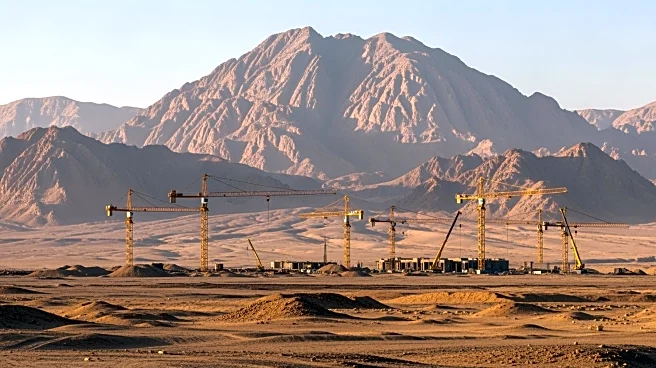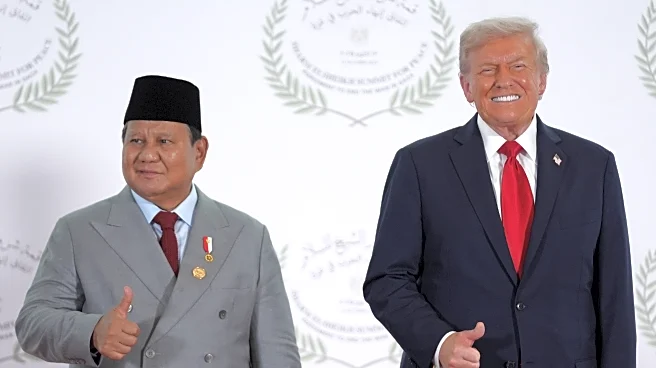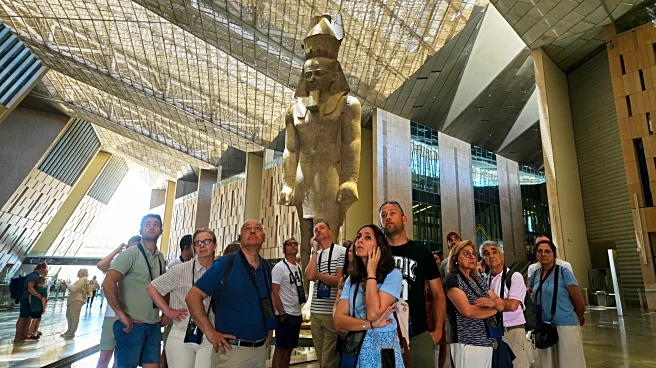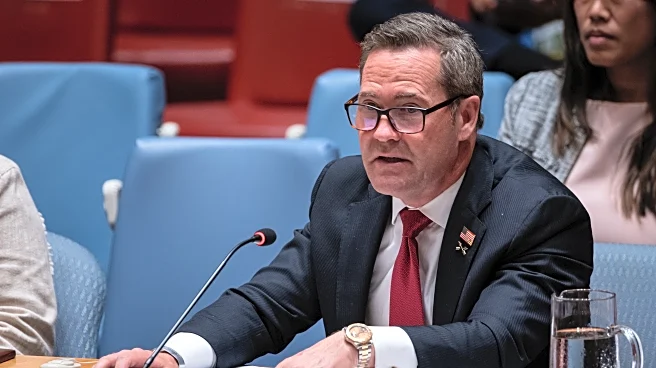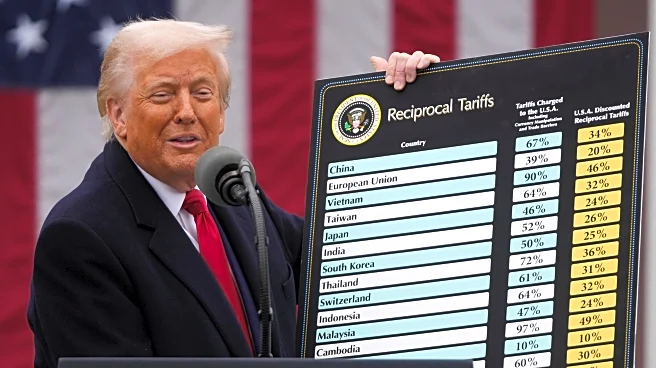What's Happening?
Mount Sinai, a UNESCO World Heritage Site revered by multiple religions, is undergoing significant changes due to Egypt's 'Great Transfiguration Project.' The initiative, backed by President Abdelfattah
El Sisi, aims to develop the area into a hub for religious, environmental, and health tourism. Construction began in 2021 and includes plazas, villas, shopping areas, and high-end hotels. The project has led to the destruction of natural landscapes and the displacement of the Jebeleya Bedouins, who have lost parts of their tribal territory. Despite recommendations from UN Habitat to halt construction, the Egyptian government continues to push forward, ignoring environmental laws and UNESCO obligations.
Why It's Important?
The transformation of Mount Sinai highlights the conflict between development and the preservation of cultural and environmental heritage. The project's impact on the Jebeleya Bedouins raises concerns about indigenous rights and the ethical implications of large-scale tourism developments. The disregard for UNESCO's recommendations and environmental laws poses a threat to the site's historical and spiritual significance. The involvement of private corporations in acquiring parts of the landscape further complicates the situation, as it may prioritize commercial interests over cultural preservation.
What's Next?
Activists and organizations like World Heritage Watch are coordinating efforts to raise awareness about the ongoing destruction of Mount Sinai's landscape. They demand international intervention to halt the project and protect the site's universal value. The Egyptian government's continued promotion of the project as a national strategic plan may lead to increased international scrutiny and pressure to comply with environmental and cultural preservation standards.
Beyond the Headlines
The situation at Mount Sinai reflects broader global challenges in balancing economic development with cultural and environmental preservation. The project's impact on the Jebeleya Bedouins and the site's spiritual significance raises ethical questions about the role of government and private corporations in managing sacred landscapes. The long-term consequences for the region's cultural heritage and the rights of indigenous communities remain uncertain.


